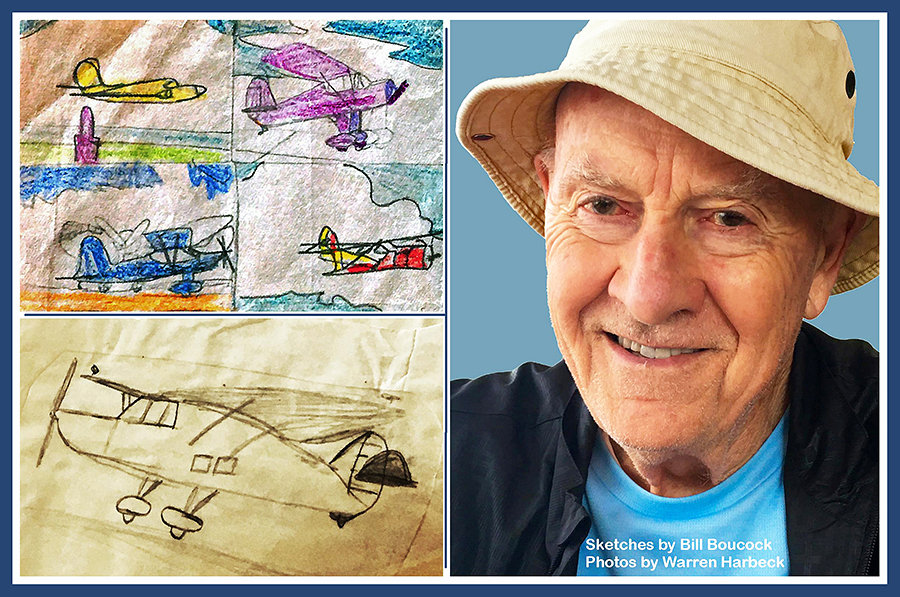
A setting-sensitive architectCOFFEE WITH WARREN, with Warren Harbeck |

|
Today, as I write this week’s column, marks the anniversary of an unexpected encounter with imagination and vision. Yes, exactly one year ago our longtime coffee companion, Bill Boucock, joined my wife and me for our weekly visit at one of Cochrane’s great coffee shops. Pulling up a chair, he set before us a rather tattered large manilla folder. I thought for sure he was going to share with us more of his life experiences as a then-85-year-old award-winning retired architect. But not this time! The folder was bursting with pencil sketches of all kinds of small aircraft. “I drew these when I was five years old,” Bill said. I’d long been aware of his fascination with airplanes. My first serious visit with Bill was in response to his invitation to Airdrie’s exhibition of a century of automotive evolution and powered flight in Canada, which he helped organize. Interestingly, his childhood fascination with airplanes didn’t carry over to his professional life. Bill has gained fame as an architect of context-sensitive buildings, both public and private. Most of us, no doubt, have visited one of his master works, the Royal Tyrrell Museum of Palaeontology in Drumheller. Not only do dinosaurs feel right at home there, but the facilities themselves feel at home in their Badlands setting. You see, one of Bill’s strong points has been his commitment to designs for public buildings that are respectful of their natural surroundings. There needs to be visual and functional harmony, he stresses. Such sensitivity to natural setting has an important place in residential designs, too, he says. Take his personal home and community, for instance. Bill was the visionary architect who collaborated with visionary developer Mike Simpson to create Toki, the picturesque community along the southwest edge of Cochrane above Jumpingpound Creek. Homes, office buildings, churches and club houses throughout the Calgary area are blessed with Bill’s designs, characterized by their visual relationship to their surroundings. Especially noteworthy is his design of the Anderson Residence. With its dramatic view of downtown Calgary, it is included in the Alberta Register of Historic Places. Yes, when only five years old, it was Bill’s fascination with airplanes that put his pen to paper. But it’s been his setting-sensitive architectural designs that really took off. His fascination with airplanes has remained a matter of fun for him, while his architecture has earned him his fame. In both areas, however, it’s been his gift of visioning that has made all the difference — and has made him a very special coffee companion to my wife and me. In many of our conversations, Bill has shared how, long before he puts pencil to paper when designing a structure, he lives a visual experience in his mind and heart. He wants to have a feeling for the new facility before he commits paper and production to a project. So, too, he has influenced my wife’s and my writings. Are we just putting words on paper, or are we using words to mirror the beauty of a listening heart, sensitive to setting and sentiment? Thanks for your positive influence, Bill. Let your wisdom keep taking wings in our direction.
© 2021 Warren Harbeck |